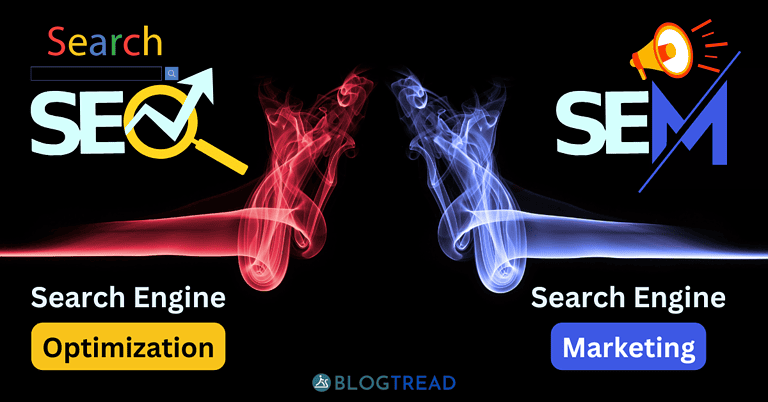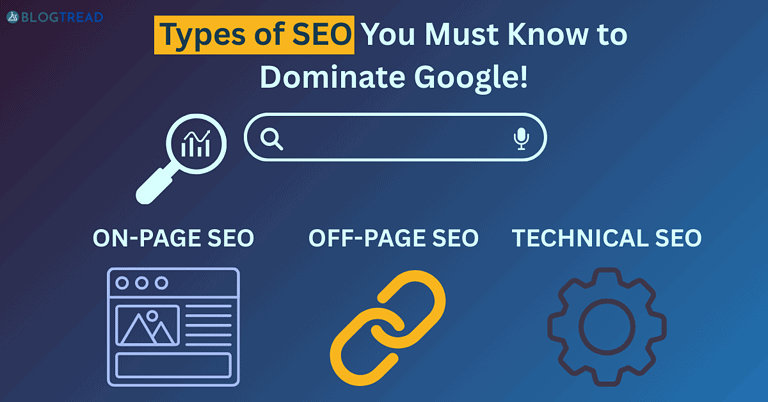What Is SEO: A Guide To Search Engine Optimization In 2025
What is SEO?
SEO stands for Search Engine Optimization. Simply, it refers to the practices and strategies that help your website rank higher on Google and other search engines without paying for ads.
In this context, you’ll often come across the term “optimization.” Optimization refers to improving your website to meet search engine requirements. By aligning your website with these criteria, you can enhance its visibility on Search Engine Results Pages (SERPs) like this-
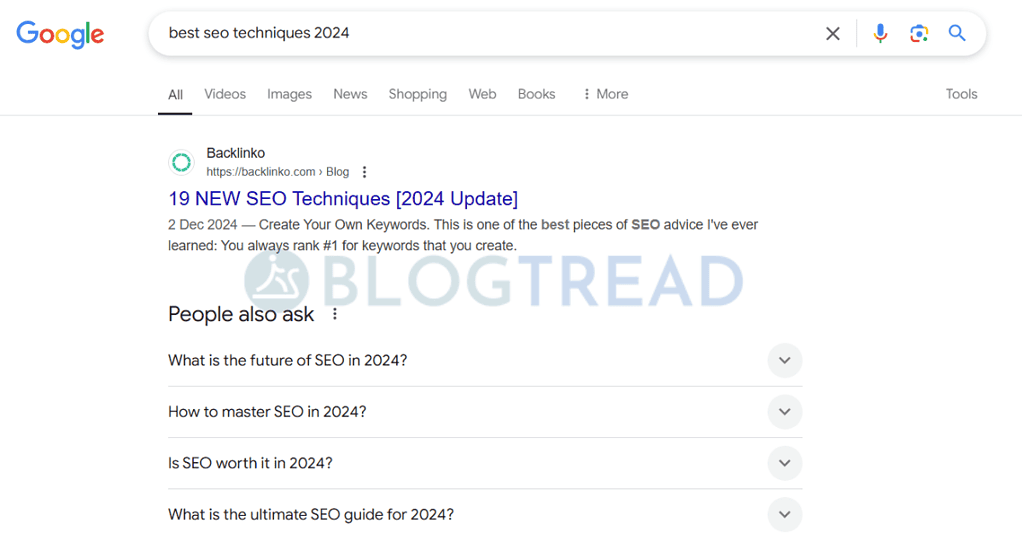
SEO helps search engines like Google understand a website’s content about a user’s query. When your content aligns with the user’s search intent, it has a higher chance of appearing on the SERPs for that search query.
In other words, SEO is a bridge that connects your website to its target audience. By improving your site’s visibility, SEO turns your efforts into measurable results, driving traffic, increasing engagement, and helping you achieve your goals.
Google processes approximately 99,000 search queries every second, translating to about 8.5 billion searches per day. This huge number shows how many people search online every day and how SEO can help bring them to your website for free through effective SEO strategies.
To effectively harness this potential, it’s essential to understand the three main components of SEO:
- On-Page SEO: Key aspects include high-quality content, strategic keyword research, and ensuring content aligns with user search intent.
- Off-Page SEO: Off-page SEO refers to activities outside your website that impact keyword ranking. It primarily involves building high-quality backlinks from reputable sites, which enhances your site’s authority and credibility.
- Technical SEO: This pertains to optimizing the technical SEO metrics of your website to ensure search engines can crawl and index your content efficiently. It includes improving site speed, mobile-friendliness, and ensuring a clear site architecture.
What Does Search Engine Optimization Mean?
SEO vs PPC vs SEM
SEO, PPC, and SEM are the terms that often confuse beginners. Here is what you should know about these terms-
SEO (Search Engine Optimization)
- Focuses on improving a website’s organic (unpaid) rankings on search engine results pages (SERPs).
- Involves optimizing content, search terms, and the website’s structure to match search engine requirements.
- Takes time to show results, but provides long-term benefits once rankings improve.
- Examples: Writing keyword-rich blog posts, building backlinks, and improving site speed.
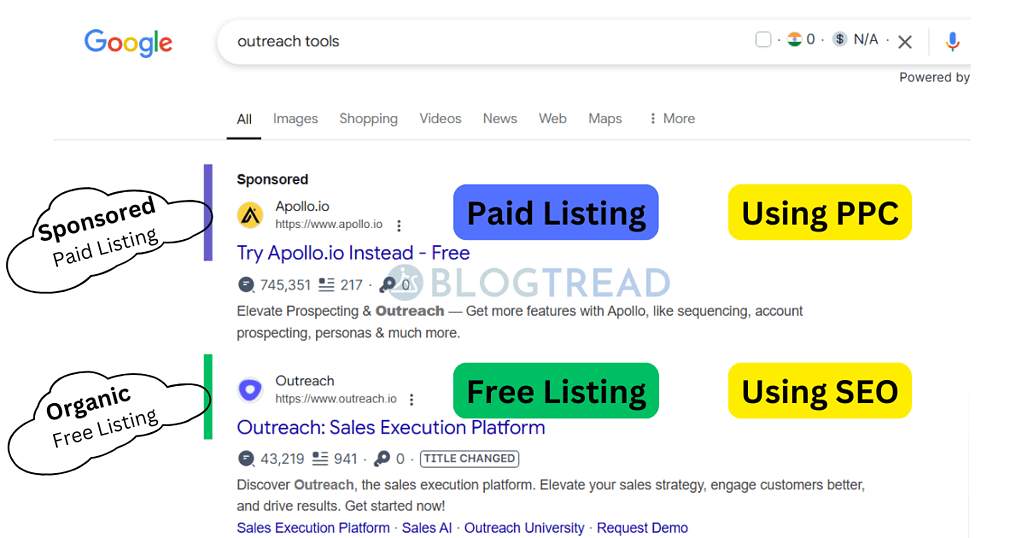
PPC (Pay-Per-Click)
- A paid advertising method where you pay for each click your ad receives.
- Ads are displayed at the top or bottom of SERPs, and labeled as “Sponsored”, as shown in the above picture.
- Provides instant visibility and traffic but stops working when the budget is exhausted.
- Examples: Google Ads, Bing Ads, or Facebook Ads campaigns.
SEM (Search Engine Marketing)
- A broader term that includes both SEO and PPC as strategies to gain traffic from search engines.
- Combines paid (PPC) and unpaid (SEO) methods to maximize a website’s visibility on SERPs.
- Focuses on overall strategies to dominate search results for targeted keywords.
Also Read– SEO vs SEM: What’s the Difference?
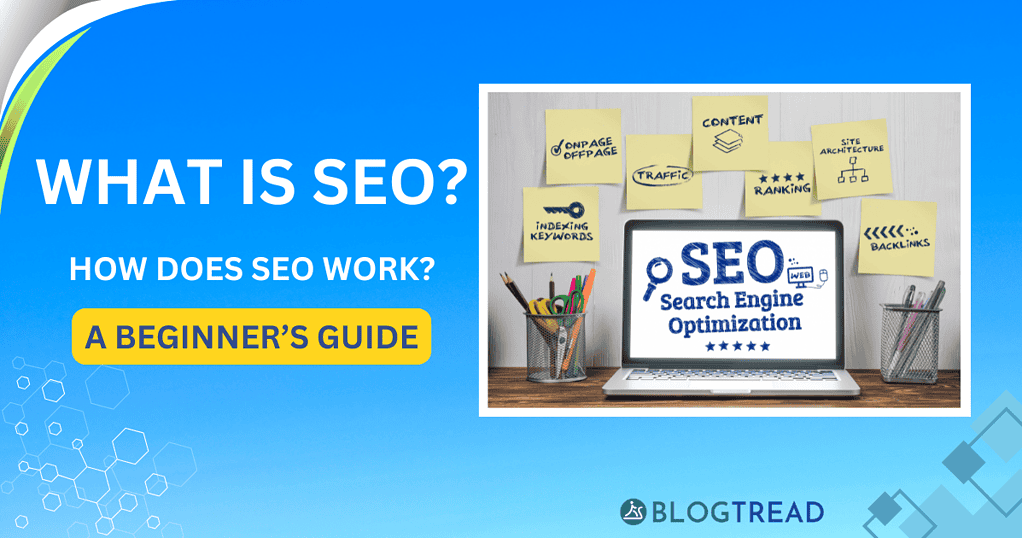
Why Is SEO Important?
Search Engine Optimization is very crucial for any online business to succeed. Here are some reasons that showcase the importance of SEO in the digital world-
In a nutshell, the main benefit of SEO is that you get the most targeted traffic free of cost. The audience you get through Search Engine Optimization is more loyal than PPC traffic and often converts into your customers.
It saves you from huge expenditures on PPC advertising or paid search campaigns. For example, this brand generates over 40,000 visitors free of charge using effective SEO techniques. Without organic search optimization, this would cost him Thousands of Dollars every month to get such traffic.
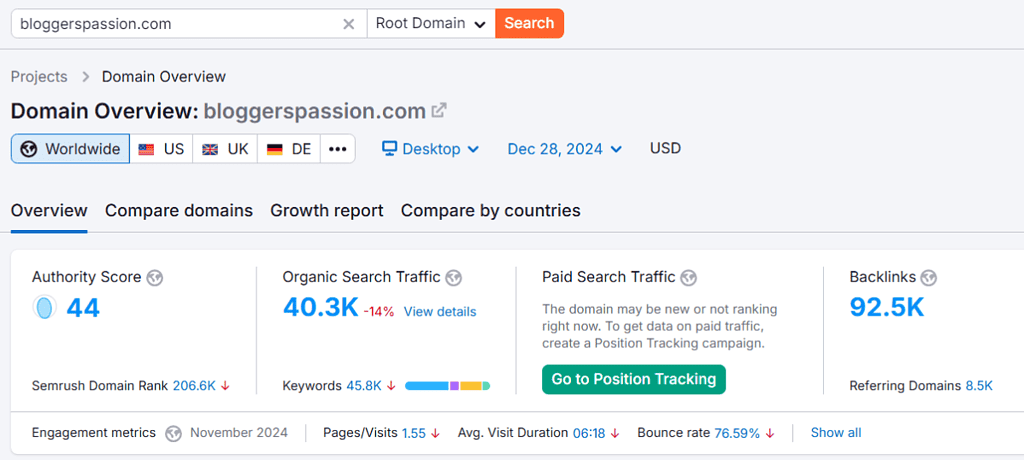
So, if you want your business to be found on the Internet, SEO basics is important. It helps you get much exposure to your brand and reach your target audience for free.
Paid listing can help you get instant traffic but if you want long-term traffic, SEO is your ultimate ally.
People trust businesses that appear on the first page of Google search results. Of course, it is very costly to retain the position through PPC, so again, your choice is organic search results.
In order to build your trust and credibility, you need to learn SEO.
Types of SEO
SEO can be divided into three main types: On-Page SEO, Off-Page SEO, and Technical SEO. Each type of optimization is important in improving your website’s visibility on search engines. Let’s understand them one by one.
On-Page SEO
This SEO type focuses on optimizing the content and elements within your website to make it search engine-friendly. It ensures that your website is relevant and helpful for users. It is the most crucial form of SEO that helps search engines understand your content and ultimately rank it according to its user-friendliness.
Off-Page SEO
This SEO type involves actions taken outside your website to improve its credibility and authority. Web search tools trust websites that other trusted websites recommend.
Technical SEO
This type of SEO ensures that search bots can crawl and index your website easily. It focuses on improving the backend structure and performance of your website.
By focusing on all three types of SEO, you can create a website that not only ranks higher but also delivers a better experience for your visitors.
How Does SEO Work?
To understand how SEO works, it’s important to first understand how search providers like Google operate. Online search platforms are designed to help users find the most relevant and accurate information for their queries.
They rely on three key processes—crawling, indexing, and ranking—to deliver results on their search engine results pages (SERPs).
By optimizing your website to align with these processes, you can improve your chances of appearing at the top of search results.
How Do Search Engines Work?
To start with SEO, the foremost thing to understand is how do search engines work.
Search engines work through a systematic process to discover, organize, and rank billions of web pages. Here’s how they do it:
Crawling
Crawling is the process where search engines send bots (also called crawlers or spiders) to discover new and updated content on the web. These bots navigate through links to find web pages and gather data.
- What they crawl: Websites, blog posts, images, videos, and more.
- How they crawl: Search Engine Crawlers follow internal and external links to move from one page to another, creating a web of connected content.
- Importance for SEO: If your pages are not linked properly or blocked from crawlers (e.g., via robots.txt), they may not be discovered or indexed.
Tip: Ensure your website has a clear structure and proper linking to help crawlers find all your pages.
Indexing
After crawling, search engines process and store the data they find in a massive database called the index. This index is like a library where all web pages are categorized based on their content.
- What happens during indexing: Search bots analyze the text, images, and metadata (e.g., titles, and descriptions) on your pages to understand what they’re about.
- Importance for SEO: Only indexed pages can appear in search results. If a page isn’t indexed, it won’t rank, no matter how optimized it is.
Tip: Use tools like GSC to check which pages of your website are indexed and resolve any indexing issues.
Ranking
Ranking is the final step where search engines order the indexed pages based on their relevance and quality for a specific query.
- How they rank: Online search platforms use algorithms with hundreds of SEO ranking factors (e.g., keyword usage, backlinks, page speed) to decide which pages appear at the top.
- Importance for SEO: The higher your page ranks, the more likely users will click on it. The goal of SEO is to optimize your pages to rank higher.
Tip: Focus on creating high-quality, user-focused content and improving your site’s authority to boost search engine rankings.
Understanding these three processes—crawling, indexing, and ranking—is key to mastering optimization. By ensuring your website is easy to crawl, accurately indexed, and well-optimized, you can improve its visibility in search engine results.
Best SEO Practices To Follow In 2025
To succeed in organic search optimization, it’s important to follow the best practices that work well with the latest search engine updates. These practices will help you improve your website’s visibility, attract more visitors, and answer the key question: “What is SEO and how do keywords help?” Let’s dive into the essential steps to optimize your website for 2025.
1. Keyword Research and Use the Right Keywords
What is a keyword in SEO? A keyword is a word or phrase that people type into web search tools when looking for information. Keywords connect your content to what users are searching for.
Steps to find and use SEO keywords:
- Use tools like Semrush, Ahrefs, or SE Ranking to find popular keywords in your niche.
- Look for keywords with a balance of high search volume and low keyword difficulty.
- Include your primary keyword naturally in the title, headings, meta description, and body of your content.
- Use related keywords (also called LSI keywords) to add depth to your content.
Example: If your main keyword is “what is SEO keyword,” you can also include relevant search terms like “how to use keywords in SEO” and “importance of keywords in SEO.”
Tip: Avoid overusing keywords (keyword stuffing), as it can harm your rankings.
2. Create High-Quality, User-Focused Content
Search providers rank content that provides value to users. Focus on writing content that is informative, engaging, and solves the reader’s problem. In a nutshell, the content should be helpful for readers and it should satisfy their search intent.
Tips for content creation:
- Write clear and simple explanations for beginners, especially for complex topics like “What is Email Marketing, Digital Marketing Strategies, etc.”
- Use short paragraphs, bullet points, and headings to make your content easy to read.
- Include visuals like images, infographics, or videos to make your content more engaging.
- Update old content regularly to keep it fresh and relevant.
3. Optimize On-Page SEO Elements
On-page SEO focuses on optimizing individual pages to rank better.
Key elements to optimize:
- Title Tags: Include your main keyword in the page title. For example, “What is SEO and How Does It Work.”
- Meta Descriptions: Write a compelling description of your page using your keywords.
- Headings (H2, H3, H4): Use headings to organize your content and include keywords naturally. Only your blog post title should use the HTML H1 tag.
- URL Structure: Use short, descriptive URLs like
example.com/what-is-seo-keyword. - Internal Links: Add links to other related pages on your website to help users and search engines navigate easily.
4. Focus on Mobile Optimization
Most users browse on their phones, so having a mobile-friendly website is crucial.
Steps to optimize for mobile:
- Use a responsive design that adapts to different screen sizes.
- There are many responsive WordPress themes that will help you make mobile friendly website like KadenceWP, Generatepress, etc.
- Ensure your site loads quickly on mobile devices.
- Avoid pop-ups that block content and frustrate mobile users.
5. Improve Site Speed
A fast-loading website not only improves user experience but also boosts your rankings.
Ways to improve website speed:
- Compress images and use next-gen formats like WebP.
- Enable caching plugins like WP Rocket for WordPress sites.
- Use a Content Delivery Network (CDN) to deliver content faster to users around the world.
6. Build Quality Backlinks
Backlinks are links from other websites to yours. They help search engines understand that your content is valuable.
How to earn backlinks:
- Create shareable content like guides, case studies, or infographics.
- Reach out to other websites for guest posting opportunities.
- Build relationships with influencers or bloggers in your niche.
Tip: Focus on earning links from reputable websites rather than buying backlinks.
7. Optimize for Voice Search
With the rise of voice assistants like Siri and Alexa, voice search optimization is important.
How to optimize for voice search:
- Target long-tail keywords and natural-sounding phrases.
- Answer common questions directly in your content.
- Include local SEO strategies like optimizing for “near me” searches.
8. Use Analytics to Monitor Performance
Tracking your website’s performance helps you see what’s working and what needs improvement.
Key tools to track website progress:
- Google Analytics: Track user behavior and search traffic sources.
- Google Search Console: Monitor your site’s indexing, ranking, and keyword performance.
- SEO Tools: Tools like Ahrefs, SE Ranking, and Semrush provide deeper insights into your SEO efforts.
By following these best practices, you’ll not only improve your website’s rankings but also ensure it provides value to users. Whether you’re focusing on SEO keywords or optimizing site speed, these strategies will help you stay ahead in 2025.
Useful SEO Tools To Make Optimization Easier
SEO can be challenging, especially if you’re just starting out. Thankfully, there are plenty of tools available to simplify the process and help you achieve better results. Here’s a list of some essential SEO tools, along with why they’re useful and how to use them.
1. Google Analytics (Free)
Why It’s Useful: Google Analytics helps you understand how users interact with your website. You can track where your visitors come from, how much time they spend on your site, and which pages perform best. Such type of SEO metrics help you optimize your website to rank higher on Google.
Key Features:
- Monitor traffic sources to identify what’s driving visitors.
- Track user behavior to improve the website experience.
- Measure conversions and set goals for your campaigns.
👉 Sign up for Google Analytics today to unlock valuable insights about your website’s performance.
2. Google Search Console (Free)
Why It’s Useful: This tool helps you monitor and maintain your site’s presence in Google’s search results.
Key Features:
- Submit your sitemap to ensure all pages are indexed.
- Check for crawling or indexing errors and fix them.
- Discover which keywords your site ranks for.
👉 Don’t miss out on this free tool! Set up Google Search Console now and take control of your site’s performance.
3. Ahrefs (Paid)
Why It’s Useful: Ahrefs is an all-in-one SEO tool that’s perfect for keyword research, backlink analysis, and tracking your rankings.
Key Features:
- Find keyword opportunities using the Keyword Explorer tool.
- Analyze competitors to see what’s driving their traffic.
- Track your backlinks and identify areas for improvement.
👉 Want to outsmart your competitors? Try Ahrefs and discover the secrets behind their success.
4. Semrush (Paid with Free Version)
Why It’s Useful: Semrush is a powerful tool for SEO success, content marketing, and competitive analysis.
Key Features:
- Perform keyword research to find high-ranking opportunities.
- Analyze your competitors’ strategies.
- Audit your site to identify and fix critical issues affecting your website health.
👉 Take your SEO strategy to the next level—start your free trial with Semrush. Many SEO experts use it step up their level.
5. WP Rocket (Premium WordPress Plugin)
Why It’s Useful: WP Rocket optimizes your website’s performance, helping it load faster and improving user experience.
Key Features:
- Speeds up your website with an easy caching setup.
- Reduces page load times significantly.
- Improves core web vitals for better search rankings.
👉 Boost your site’s speed and performance with WP Rocket.
6. Rank Math (Free and Paid Versions)
Why It’s Useful: Rank Math is a comprehensive WordPress SEO plugin that simplifies on-page optimization.
Key Features:
- Provides keyword suggestions while you write.
- Analyzes a piece of content for crucial improvements in real-time.
- Offers advanced schema support to improve rich snippets.
👉 Optimize your WordPress website effortlessly with Rank Math.
7. SE Ranking (Paid with Free Trial)
Why It’s Useful: SE Ranking is an all-in-one SEO software for keyword rank tracking, competitor analysis, and website audits.
Key Features:
- Monitor keyword rankings with precision.
- Conduct detailed website audits to find SEO issues.
- Analyze competitors’ performance for strategic insights.
👉 Start optimizing smarter with SE Ranking.
Why These Tools Are Important
Using these tools not only simplifies your SEO tasks but also helps you make data-driven decisions to grow your website. Whether you’re analyzing traffic to your site, finding the perfect keywords, or optimizing site performance, these tools will save you time and effort.
Pick a tool that matches your needs and start optimizing your site today for better rankings and traffic!
Conclusion: Getting Started with Your SEO Journey
SEO is a journey that requires patience, strategy, and continuous learning. From understanding what SEO is to mastering on-page, off-page, and technical SEO, every step brings you closer to building a website that ranks higher and attracts more visitors.
By following the best SEO practices, using the right tools, and staying updated with industry trends, you can unlock the full potential of your website. Remember, SEO isn’t just about search engines—it’s about creating a great experience for your audience.
Now that you’ve learned everything you need to get started, it’s time to take action. Begin with small, consistent efforts, and watch your website grow over time.
Ready to start your SEO journey? Leave your questions in the comments below or share this guide to SEO with others who may find it helpful!

